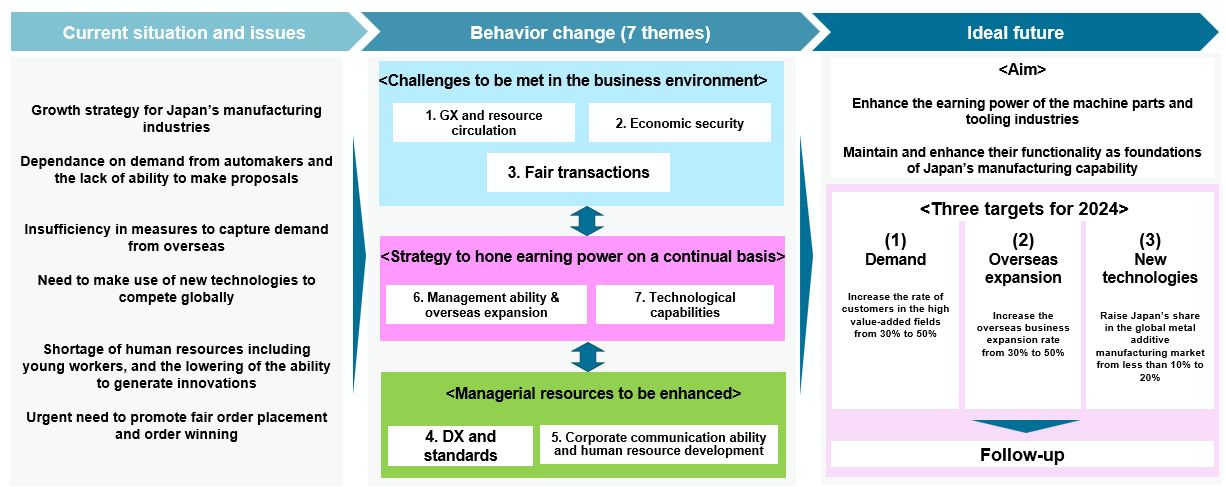- Home
- News Releases
- Back Issues
- March FY2025
- FY2025 Vision for the Machine Parts and Tooling Industries Formulated
FY2025 Vision for the Machine Parts and Tooling Industries Formulated
March 28, 2025
For the maintenance and enhancement of the competitiveness of Japan’s manufacturing industries, the Ministry of Economy, Trade and Industry (METI) formulated the FY2025 Vision for the Machine Parts and Tooling Industries with a view to supporting the industries in proactively embracing broader challenges and not simply maintaining the status quo.
1. Purpose
Japan traditionally has strengths in manufacturing high-performance and high-quality products by making use of casting, forging and other tooling technologies. However, due to the structural shortage of labor and the progress of globalization across domestic manufacturing industries, Japan is facing the intensification of competition with other countries including emerging economies, while the introduction of new manufacturing technologies is being promoted.
Amid these dramatic changes, in order to maintain and enhance the competitiveness of Japan’s manufacturing industries, METI, through the Committee to Formulate a Vision for the Machine Parts and Tooling Industries, carried out assessments of measures to be taken in the medium- to long-term to support the machine parts and tooling industries in proactively embracing broader challenges and not simply maintaining the status quo, formulating the FY2025 Vision for the Machine Parts and Tooling Industries to present a desirable future for the industries.
2. Key points of the FY2025 Vision for the Machine Parts and Tooling Industries
(1) Aim
METI aims to enhance the earning power of Japan’s machine parts and tooling industries by making effective use of digital technologies and managerial resources including human resources to respond to changes in the business environments of manufacturing industries, thereby maintaining and strengthening the functionality of the machine parts and tooling industries as foundations of Japan’s manufacturing capability.
(2) Specific targets
Based on the aim as stated above, the following three targets were set as the specific challenges to be met to foster behavior changes for the transformation of Japan’s machine parts and tooling industries:
1) Increase the rate of customers engaged in high value-added fields*, such as aerospace business, from 30% to 50% in the machine parts and tooling industries by 2040, while securing and expanding demand from the automobile industry
*Aerospace, industrial equipment, construction machines, robots, semiconductor manufacturing equipment, medical devices, energy and other fields
2) Increase the overseas business expansion rate (foreign direct investment, direct export, outsourced manufacturing and others) of Japan’s machine parts and tooling industries from 30% to 50% by 2040
3) Boost Japan’s share in the global metal additive manufacturing market from less than 10% to the world’s top level (20%) by 2040 in order to expand the business domains of the machine parts and tooling industries through the fusion of new technologies.
3. Outline of the Vision for the Machine Parts and Tooling Industries
Toward the achievement of the aim and the three targets, the Vision shows the specific direction of the measures to be taken in each of the following areas: GX and resource circulation; economic security; fair transactions, DX and standards; corporate communication ability and human resource development; management ability and overseas business expansion; and technological capabilities.

Division in Charge
Machine Parts and Tooling Industries Office, Manufacturing Industries Bureau